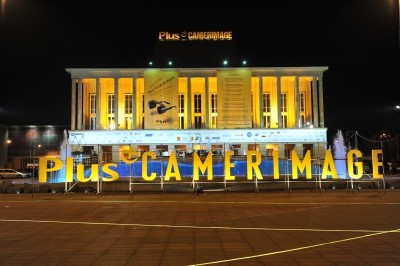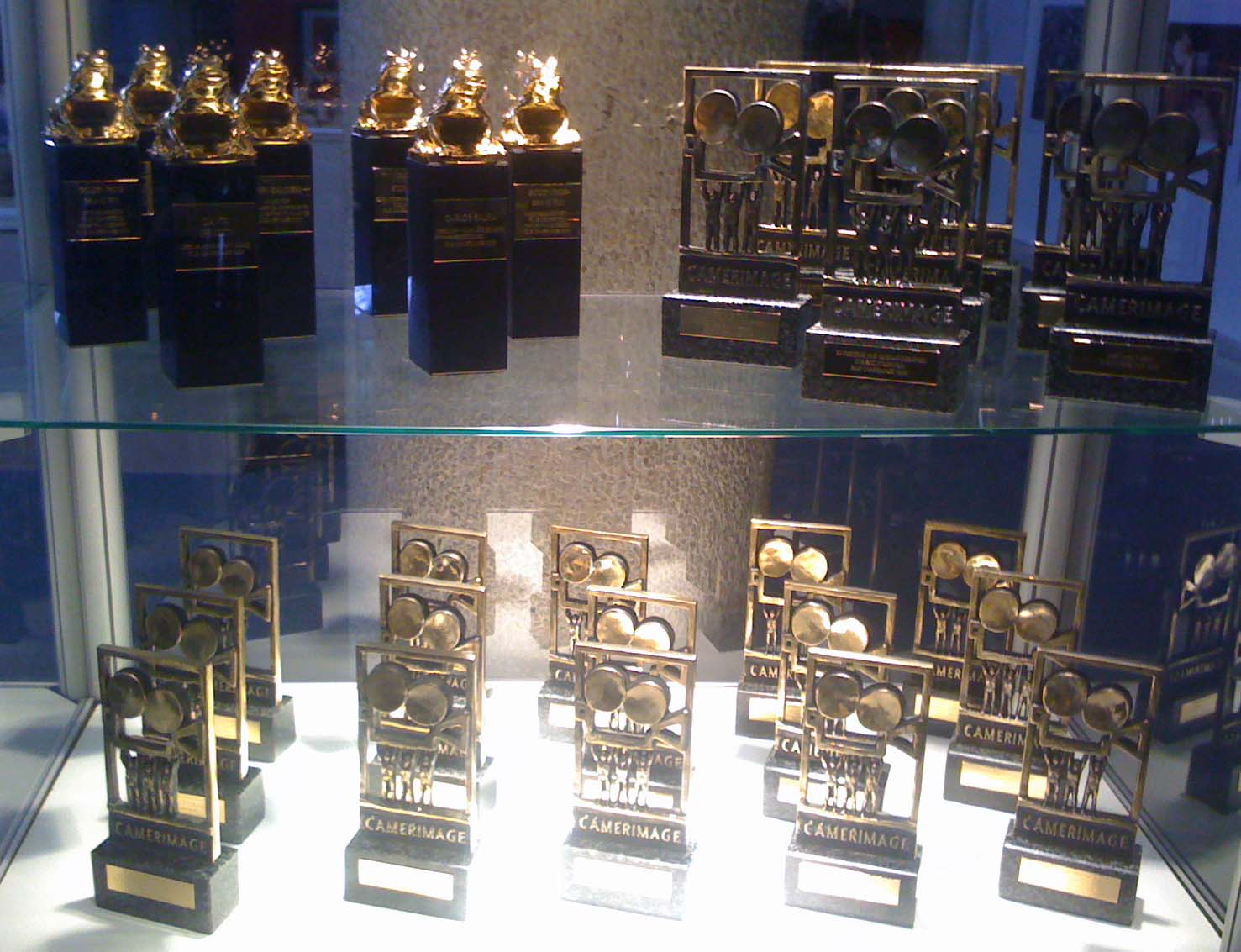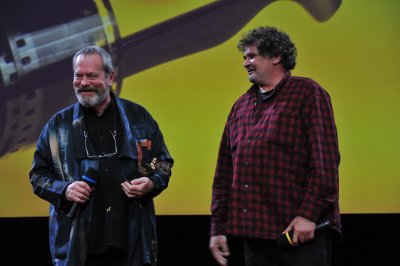Surviving camerimage 2009


- by Louis-Philippe Capelle
LODZ, Sunday December 6
The 17th International Film Festival of the Art of Cinematography – Camerimage is history. It will take me a week at least to settle down again … The days were long and the nights were short, with dinner parties, meetings, lots of vodka and socializing. At Warsaw Airport, where I arrived Saturday afternoon in order to be able to attend the opening ceremony, I was welcomed by a bunch of charming and smiling young ladies, to take me on the “D.O.P Bus” towards Lodz.

The roads have improved considerably since last I came here in 2005 for the promotion of Olivier Smolders’s Nuit Noire. The temperature was mild and it was sunny when we arrived on familiar territory, entirely ready to gather the latest news from Planet Cinematography.
This year, I had been invited to join the jury for the «Golden Frog» for best feature length documentary. My fellow jury members were a Polish director, a representative of Discovery Channel Central Europe, D.O.P Karl Walter Lindelaub (a German cinematographer living and working in L.A. who did the cinematography of Paul Verhoeven’s Black Book) and best-selling novelist Laurent Grobel. What better company could I wish for?
We had to view 12 films from as many countries, either on 35mm or on 2K-projection in a real film venue. This competition for documentaries, by the way (both short and feature length), is new at Camerimage: it was organized for the first time in 2008. And, what struck me: huge crowds of people queued up for each and every screening.
No Belgian films in the main competitions, except for the Music Video category, in which a Belgian clip (from Antwerp) which I thought looked a bit greenish, was to snatch the Best Music Video Prize. Unfortunately, neither DOP Nicolas Karakatsanis, nor director Joe Vanhoutteghem attended.

Anton Mertens and I travelled together to Lodz, first by plane, then by bus, and I meet him every day coming out of the screenings of the main competition films in the main theatre. There are also a couple of students from Insas, who participate at the numerous workshops organized by the Lodz film school, which became renowned thanks to Polanski’s Two Men and a Wardrobe . They are satisfied, but exhausted, spending long evenings at the disco of the Central Hotel, the festival centre where most of us also have a room, and where the days begin with breakfast and end in the wee hours in the night club with loads of Polish vodka, in clouds of smoke, and under deafening noise and infernal rhythms.
The jury of the main competition, on the other hand, had a tougher job : they had to view 17 films. Their schedule started with a morning screening at 10, to end by 9.30 in the evening…
The days were concluded with lavish walking dinners at various locations in town, all sponsored by major companies, including Kodak, Panavision, Hawk- Vantage and Arri. The dinners were excellent occasions to sit down and relax, and offered opportunities for conversations with some of our great heroes, including Vilmos Zsigmond, always in good shape and generous, Phil Meheux, always in for a good joke or Bruno Delbonnel, always in the mood for some nice anecdote about the shooting of Harry Potter.

This year, our French friends and colleagues of the AFC (Association Française de Cinématographes) were represented by Eric Gauthier, Eric Guichard and Antoine Struyff, his Belgian assistant. Richard Andry came over too, for the Friday morning Imago Meeting. Others were there too, of course, and I hope they will not blame me for no longer remembering the complete list of attendants.
This year’s event also had an architectural side to it: famous architect Frank Gehry (Bilbao Guggenheim Museum) is here to present his design for the new festival palace, which is expected to be ready five years from now. Relying on considerable European support – 350 million € – Lodz wants to build a cinema centre (called “David Lynch Studio” after its promoter) and an hyper-modern cultural centre hosting a 2,500 seats cinema venue.
The other major event was the screening of Io Don Giovanni (I, Don Giovanni), Carlos Saura’s latest film, in the presence of the director and of cinematographer Vittorio Storaro, who are to be given honours for their ongoing collaboration on more than five films.
As «il maestro» appeared, in front of a host of cameras and flash lights, it felt a bit as if the “David Beckham of cinematography» had arrived, even though he himself acted more like a «present day Caravaggio»… But let us turn back to the films.
With my competition programme I was obviously unable to attend all the films in the main competition. Still, I managed to view 24 of them!!!!
It is worth noting that in the two main competitions, it was the Israeli films that snatched the prizes. Lebanon (2009 Golden Lion Venice), a war story of 5 characters in a closed doors setting, entirely filmed inside a tank. Technically, visually and aurally a very challenging film (a very impressive soundtrack indeed), shot in RED and Super 16 and mixed, without one single exterior shot, except when the camera looks into the viewfinder with a character. I thought it was impressive, worth watching, and that is also what the jury seemed to think.
I shall also remember a beautiful Finnish film Letters to Father Jacob: protestant, strict, dark and gloomy, 2 characters behind closed doors, also shot in RED… simply superb. There also was this Australian film which did not win prizes, but received a nod from the jury: Samson and Delilah, written, directed, produced, composed and shot by one single person, a simple story shot in 35mm, and two 2 blondes (I mean 2KW, obviously), about two marginal adolescents lost in the bush. I loved it.

Another remarkable film told a story that is somewhat unexpected considering its origin: 2009 Berlin Silver Bear winner About Elly from Iran: a sober, highly effective and beautifully shot film, even though the directing felt somewhat theatrical. And finally, a visual fairytale, Terry Gilliam’s latest The Imaginary World of Doctor Parnassius, shot by the very sympathetic Nicola Pecorini: visual fireworks all the way.
In the documentary section, we have awarded a magnificent film about a “search of a reincarnation in Tibet in the shape of a two year old child”, simply shot in DV and mostly consisting of images, shot by a minimal crew, but always in the right place with a proper framing, sober and effective. Really magnificent.
One question now comes to my mind: why were there no Belgian films? There was none in the final short list, but there had not been any in any of the various selections (over 300 documentaries, all in all) either.
This is odd, considering Belgian documentary filmmaking is well-known and respected. No reason to be ashamed in the area of fiction, either. Maybe it is a consolation to note that there were no French films in the main competitions either, even though the majority of documentaries, or independent films I saw, had been supported by ARTE.
Between presentations by its president, Nigel Walters, our advocate Cristina Busch and BVK manager Michael Neubauer, Imago also attended a colloquium on copyright and working conditions. We concluded that we would produce a joint declaration that would summarize our points of view on that issue and that we shall submit to all associations.
Today, Sunday, I am sitting in my hotel room, waiting for the taxi to take me to Warsaw, along with an Icelandic DOP whose name I cannot possible pronounce. I look out the window. The sky is grey. After a week of sunny spells, rain has been announced. Time to leave.
See you next year.

THE WINNERS:
MAIN COMPETITION
Golden Frog: Lebanon – DOP. Giora Bejach, Israel
Silver Frog: The Dark House – DOP. Krzysztof Ptak, Poland
Bronze Frog: Reverse – DOP. Marcin Koszałka, Poland
COMPETITION FOR FEATURE LENGTH DOCUMENTARIES
Grand Prix – Golden Frog: Unmistaken Child – DOP. Yaron Orbach, Israel
Discovery Networks Central Europe Award: The Two Horses of Genghis Khan – DOP. Martijn van Broekhuizen, the Netherlands
Special Mention: Blind Loves – DOP. Juraj Chlpík, Czech Republic
MUSIC VIDEO COMPETITION
Best Video: The Hickey Underworld “Blonde Fire”, Belgium
DOP: Nicolas Karakatsanis
Director: Joe Vanhoutteghem

- The Hickey Underworld
photos by Louis-Philipe Capelle & PlusCamerimage, Andrzej Lew
